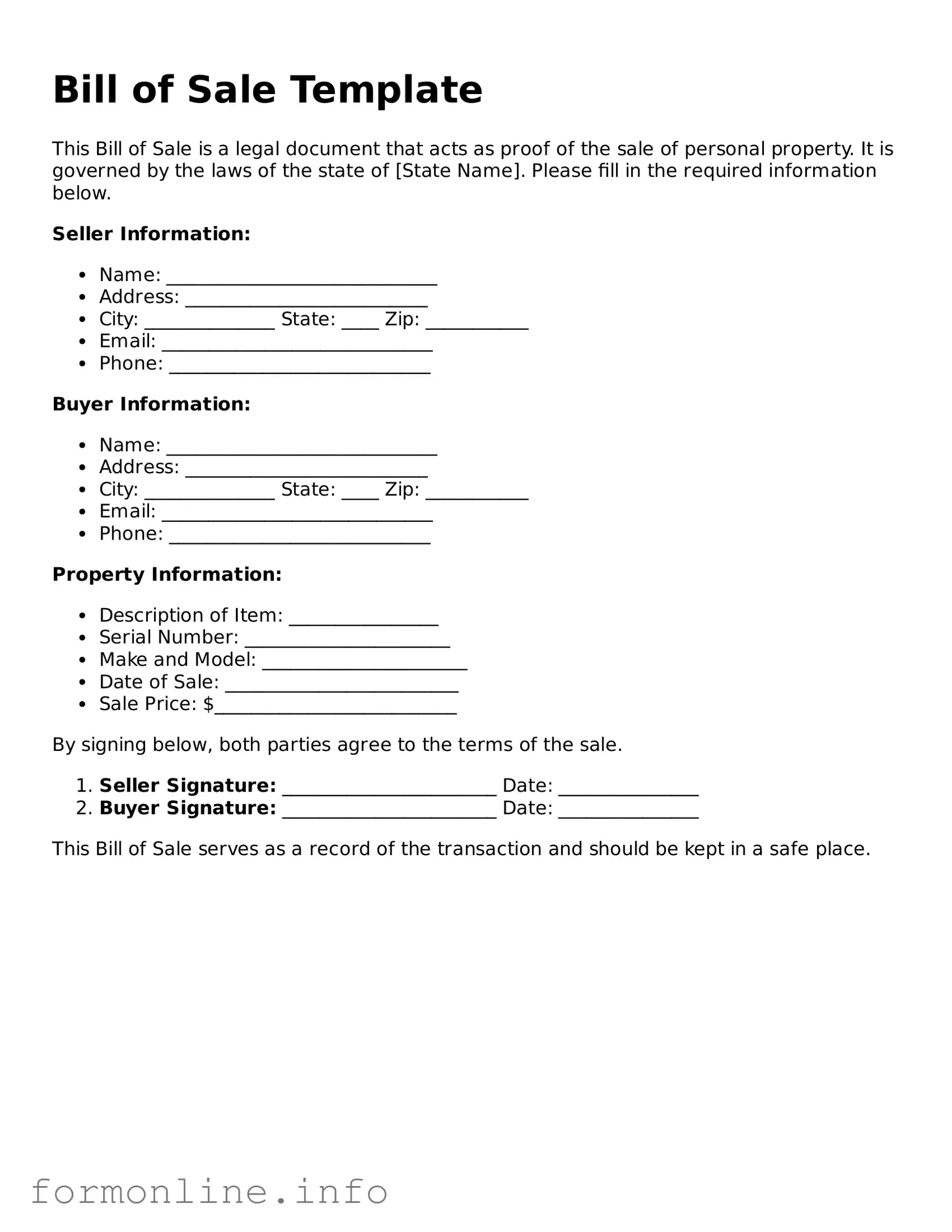Printable Bill of Sale Form
A Bill of Sale is a legal document that transfers ownership of personal property from one party to another. This form serves as proof of the transaction and outlines key details such as the buyer, seller, and item being sold. To ensure a smooth transfer of ownership, consider filling out the Bill of Sale form by clicking the button below.
Prepare Form Online
